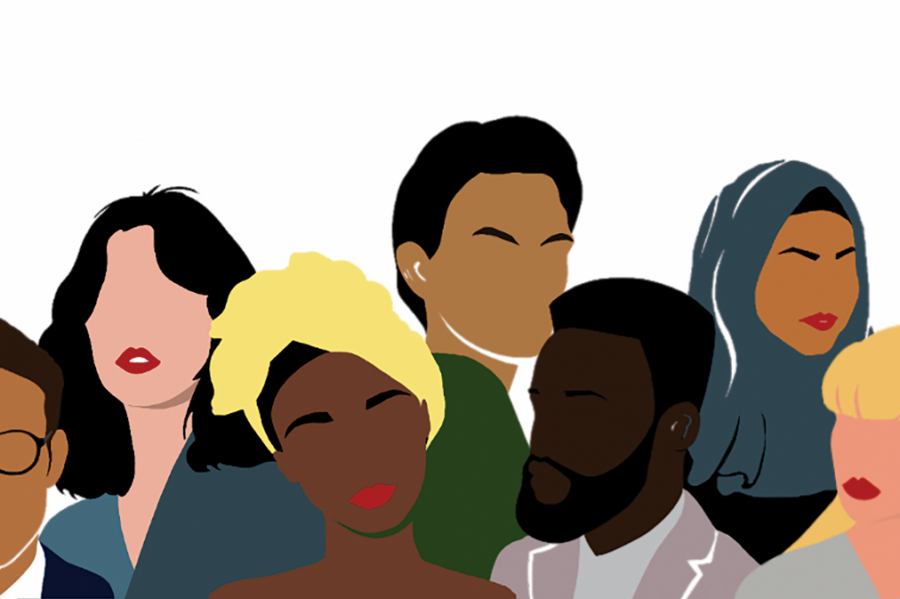Breakthrough Day is worth doing well
Jun 24, 2019
Breakthrough Day felt like a rush job.
I should note that students in each grade had differently structured events. Juniors discussed a slideshow presented by students from Students Organized Against Racism (SOAR) and Leadership. Freshmen also had a slideshow, although it was presented by Link Leaders. Sophomores used the film I’m Not Racist … Am I? as a springboard for discussion. Seniors had no Breakthrough Day at all.
As a junior, my Breakthrough Day went this way: After some initial confusion and students being shuffled around, during which time I was sent twice to the wrong classroom, I ended up in the right one. The students who led our discussion moved through a slideshow containing definitions and examples of racism and several of its subcategories, such as cultural appropriation. They invited us to “talk to each other”: turn to a partner and discuss — or to a group, or to the class — and the results were mixed.
Students in SOAR and Leadership should be commended for organizing Breakthrough Day at all, since stimulating a positive racial dialogue is no easy feat in any environment.
They should be commended, too, for their decision to cover topics more specific and more useful than just “racism” — like tokenism, the inclusion of a person belonging to some minority into a group in order to give the appearance of equality. I’m Asian American, and the discussion of media representation and the inexplicable lack of Asian actors onscreen was particularly gratifying to me.
But the disorganized nature of the event inhibited its ability to start a constructive conversation, and may have actually dissuaded people from listening further.
In the classroom I was in, the most useful contributions to the discourse came from students of color who were willing to share their own experiences. Students of color should not be required or expected to guide the conversation, or even take part in it, if doing so puts them in a hostile environment. But when they choose not to speak out, “talking to each other” means white students talking to other white students. It fosters the same kind of echo-chamber tautology responsible for the racial ignorance already present in Tam’s culture. In that situation, it falls on the presenters to maintain focus and perspective, and they were not entirely able to do that.
Here’s an illustration. I’m sure most people would agree that Karlie Kloss wearing a Native American-style headdress to a Victoria’s Secret fashion show was, if not racist, at least baffling and distasteful. And it makes sense to introduce the topic of cultural appropriation with such a flagrant example, as was done in our discussion.
But cultural appropriation is a controversial subject because most offenses are less clearly defined. And as the writer N. K. Jemisin notes, understanding racism in environments far removed from your own does not necessarily help you understand racism in your own environment. It’s not hard to imagine that someone could recognize the problems with a headdress but not with more subtle, Tam-specific occurrences.
The issue then becomes that the students tasked with educating us were not sufficiently equipped to lead a conversation at the necessary level of nuance. What happens when a well-informed student with politically incorrect beliefs wants to have an intelligent conversation about cultural appropriation? Or when a white Link Leader is made to field questions from freshman students of color whose experiences run far deeper than a slideshow?
The bottom line is that for Breakthrough Day to be effective, it needed to be organized better and earlier.
For example: Several Link Leaders told me that their training was half an hour long and done the morning of. This could have been done earlier, or in more detail, or the students in charge of the event could have found professionals to lead discussions instead.
For example: Seniors were excluded from Breakthrough Day because its organizers “didn’t have the resources” to educate that many people, according to social studies teacher Dr. Claire Ernst. But it seems unlikely that, given a year to plan, neither students nor administrators could have come up with any way to involve them. I can think of several ways off the top of my head.
And, crucially, in order for Breakthrough Day to achieve its goals, it needed to show students who don’t care about racial issues why they should care. Students inclined to such ambivalence could very well see a slapdash presentation, or a repetitive, static discussion, and say: Well, this wasn’t worth my time … and then discount the topic entirely. In that respect a hastily organized Breakthrough Day may be worse than no Breakthrough Day at all.
There’s a maxim that if something is worth doing, it’s worth doing well. Corollary to this idea is that if something isn’t worth doing well, it’s not worth doing. Turn to a partner and discuss: Is Breakthrough Day a useful investment?




